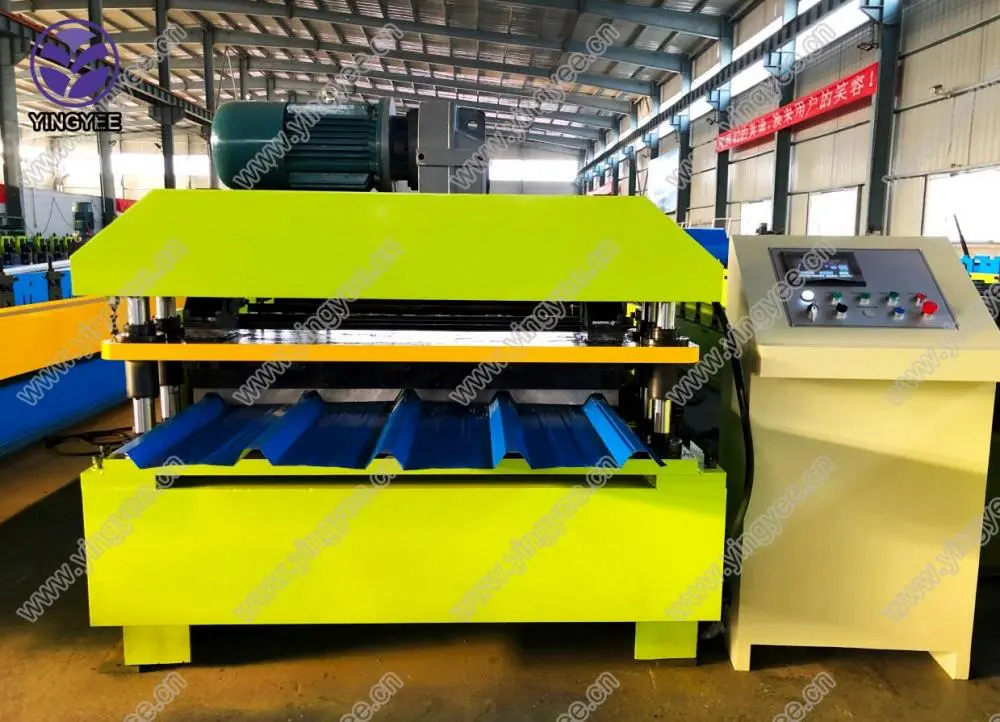
Noise Barrier Cold Bending Machine Innovations in Construction and Environmental Protection
In the ever-evolving world of construction and environmental management, the need for effective noise reduction solutions has gained significant importance. One pivotal innovation in this field is the noise barrier cold bending machine, designed to create noise barriers that effectively mitigate noise pollution in urban areas and along highways. This machine not only enhances the quality of life for residents living near noisy environments but also represents a significant advancement in modern construction technology.
Understanding Noise Barriers
Noise barriers, often referred to as sound walls, are structures designed to obstruct and diminish environmental noise generated by traffic, industrial activities, or various construction processes. They work by reflecting, refracting, or absorbing sound waves, thereby reducing the overall noise levels experienced by individuals nearby. The demand for effective noise barriers has surged, particularly with the increase in vehicular traffic and urban development. As a result, the selection of materials and construction methods has become vital to achieving desired acoustic outcomes.
What is a Cold Bending Machine?
A cold bending machine is a specialized piece of equipment used in the manufacturing of various metal components without the need for heat. Unlike traditional bending methods that utilize heat to deform metal, cold bending maintains the structural integrity of the material, allowing for precise shaping while preserving its strength and durability. This approach is particularly beneficial for the production of noise barriers, as it allows for a variety of design options and customization tailored to specific acoustic requirements.
The Advantages of Using a Cold Bending Machine for Noise Barriers
The use of a cold bending machine in the construction of noise barriers offers several distinct advantages
1. Precision Engineering Cold bending machines are capable of producing components with high accuracy, ensuring that the dimensions and angles of the noise barriers are consistent. This precision is crucial for the barriers to perform effectively as intended.

2. Material Efficiency By eliminating the need for heating, the cold bending process minimizes material waste. This is an environmentally friendly advantage, especially when considering the large-scale production of noise barriers for urban projects.
3. Rapid Production With advancements in technology, cold bending machines can operate at high speeds, significantly reducing the production time for noise barrier components. This efficiency translates to quicker installation on job sites, ultimately leading to reduced labor costs and project timelines.
4. Versatility in Design Cold bending machines allow for innovative designs and customizable shapes that meet the aesthetic and functional requirements of various projects. Whether curve-shaped barriers for sound reflection or flat panels for absorption, the versatility of these machines caters to a wide range of engineering needs.
5. Enhanced Durability The cold bending process strengthens the material, ensuring that the noise barriers can withstand harsh weather conditions, resist wear, and maintain their effectiveness over time. This longevity is crucial in urban settings where exposure to elements can degrade weaker materials.
Environmental Impact and Future Prospects
As cities continue to grow and expand, the emphasis on sustainable and noise-reducing solutions will only intensify. The integration of cold bending machines into noise barrier construction not only represents a shift towards more efficient manufacturing practices but also aligns with broader environmental goals. By reducing noise pollution, these barriers contribute to better mental health and community well-being, promoting a more livable urban atmosphere.
Looking ahead, innovations in technology may further improve the capabilities of cold bending machines. The incorporation of smart technologies, such as sensors and automation, could enhance the production process and monitoring of noise barriers, making them even more effective at mitigating sound pollution. Research into new materials that provide superior sound absorption while being lightweight could also revolutionize how these structures are designed and implemented.
Conclusion
The noise barrier cold bending machine is a pivotal technology in the quest for effective noise control solutions in urban environments. By combining precision engineering, material efficiency, and sustainable practices, this innovative machine is set to play a crucial role in shaping quieter, more peaceful communities. As technology continues to advance, the integration of such machines will undoubtedly lead to enhanced designs and more effective noise reduction strategies, promoting healthier living conditions for all.